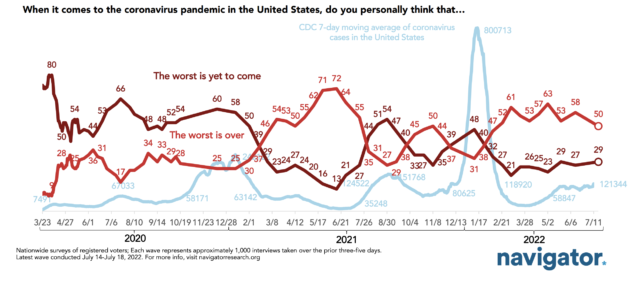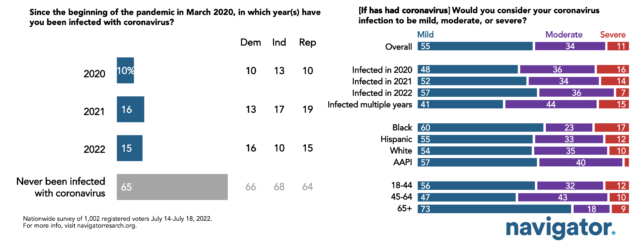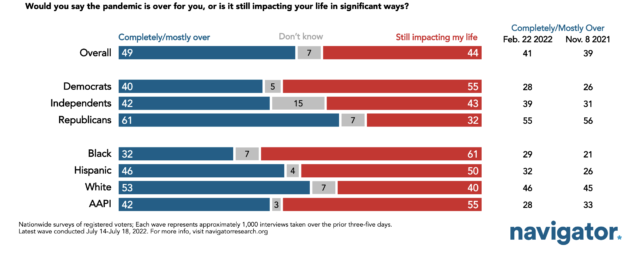- The share who say the “worst is over” in the pandemic is in decline as coronavirus cases rise in the United States.
- Still, nearly half of Americans say the pandemic is over for themselves personally – though almost two in five say life will never fully return to normal.
- Compared to February of this year, a growing percentage say mask mandates should be in place when cases are high but removed when they are low as a declining percentage say mask mandates should be in place until the pandemic is over.
Declining Share Say the “Worst Is Over” in the Pandemic
Since Navigator began tracking this question in February 2020, the share who say the “worst is yet to come” has tracked largely with rises and falls in case counts in the United States – recent rises in cases again track with a declining share who say the “worst is over.”
Among Americans Who Have Had Coronavirus, Over Half Report Having Had Mild Symptoms
Those infected in 2022 are more likely to report having had mild cases (57%) than those infected in 2020 (48%) or 2021 (52%); a plurality of those infected in multiple years report having had moderate cases (44%).
Nearly Half of Americans Say the Pandemic Is Completely or Mostly Over for Themselves Personally
Black Americans (61%), Democrats (55%), AAPI (55%), and Hispanic Americans (50%) are most likely to say the pandemic is still impacting their lives.
Americans Are Divided on When Life in the United States Will “Return to Normal”
Republicans are most likely to say that the United States has “already returned to normal” (29%).
Fewer Agree Mask Mandates Should Be in Place Until End of Pandemic, More That It Should Be Dynamic With Case Counts
Since February, there has been an 11-point increase in the share who say mask mandates should be in place when cases are high and removed when cases are low (from 30% to 41%).
- There has also been a 9-point decrease in the share who say mandates should be in place until it ends (from 36% to 27%).
About The Study
Global Strategy Group conducted public opinion surveys among a sample of 1,002 registered voters from July 14-July 18, 2022. 108 additional interviews were conducted among Hispanic voters. 67 additional interviews were conducted among Asian American and Pacific Islander voters. 104 additional interviews were conducted among African American voters. 97 additional interviews were conducted among independent voters.





